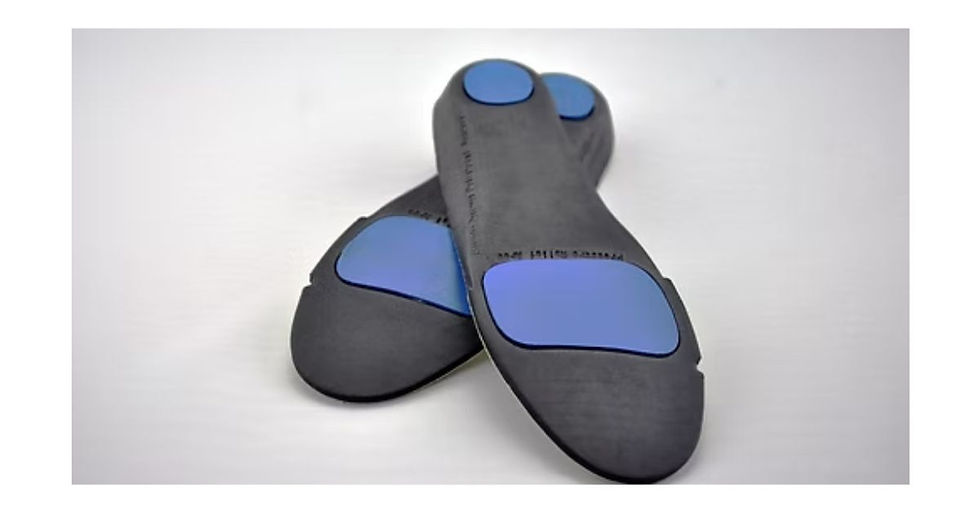Relief for Osteoporosis Patients: How Back Braces Can Help
- Lifeforce Hub Singapore

- May 4, 2023
- 4 min read
Updated: Oct 5, 2023

Osteoporosis is a progressive condition that results in weakened bones, making them more susceptible to fractures. Providing proper back support is crucial for managing the pain associated with this condition.
However, in order to select the appropriate support, it is essential to have a thorough understanding of the available options and their benefits. By educating oneself on the importance of back support for osteoporosis, individuals can make informed decisions and take steps towards improving their quality of life.
What is Osteoporosis?
Osteoporosis is a bone disease that occurs when the body loses an excessive amount of bone or fails to produce enough new bone tissue. This can result in bones becoming weaker and more susceptible to fractures and compression fractures. In severe cases, even minor actions such as sneezing can cause bones to break.
The condition is characterized by a reduction in bone density and mass, which disrupts the normal structure of affected bones. Bones affected by osteoporosis have lost their density or mass, and they will no longer have a normal tissue structure. This leads to weaker and more fragile bones, making them more prone to breakage and compression fractures.
Understanding the causes and consequences of osteoporosis is essential for preventing and managing the condition. It is often caused by a combination of factors such as genetics, hormonal changes, and lifestyle choices.
Overall, osteoporosis can have a significant impact on an individual's quality of life, making it important to take steps to prevent or manage the condition. By understanding the causes and effects of osteoporosis, individuals can take proactive measures to maintain strong and healthy bones.
What Causes Osteoporosis?
Osteoporosis can develop when bone tissues and minerals are lost more quickly than the body can replace them. Additionally, there are several risk factors or causes that can increase the likelihood of developing osteoporosis.
Here is a list of these factors to help you better understand:
If Women are at a higher risk due to the loss of estrogen after menopause, which plays a crucial role in bone repair.
A family history of osteoporosis can also increase the chances of developing the condition.
Lifestyle factors such as smoking, excessive alcohol and caffeine intake, certain medications, and medical conditions can contribute to bone loss and increase the risk of osteoporosis.
Physical activity can help maintain stronger bones and reduce the risk of osteoporosis. Conversely, a lack of physical activity can lead to a quicker loss of bone mass and a higher risk of osteoporosis.
Adequate intake of calcium and vitamin D is essential for maintaining healthy and strong bones throughout life. Insufficient intake of these nutrients can increase the risk of osteoporosis.
What are the Preventive Measures for Osteoporosis?
If you are at risk of osteoporosis, it's important to take preventative measures to maintain bone health. Here are some recommended actions to consider:
Increase your calcium intake to promote strong bones.
Incorporate foods high in vitamin D into your diet to ensure adequate nutrient levels.
Engage in regular exercise to strengthen and maintain healthy bones.
Limit excessive alcohol consumption and avoid smoking to reduce the risk of further bone loss.
Also Read – What you need to know about Osteoporosis
Why are Braces Used in the Treatment of Osteoporosis?
Osteoporosis can lead to inflammation that limits mobility, affecting various joints such as the knees, ankles, neck, shoulders, and wrists.
When diagnosed with osteoporosis, doctors often recommend non-surgical treatments to alleviate discomfort and disability. One such recommendation is the use of a brace to support affected joints.
Here are the advantages of wearing a brace for the treatment of osteoporosis:
Braces offer increased stability to the affected or damaged area of the joint, reducing pain and discomfort.
Some braces provide compression, which helps to minimize swelling that may occur after physical activity.
Some braces provide compression, which helps to minimize swelling that may occur after physical activity.
When wearing a brace, you may experience an increase in confidence, allowing you to complete daily tasks with greater ease and comfort.
Different Types of Braces Used in Osteoporosis Treatment
Osteoporosis braces are usually made of a combination of plastic, metal, and other materials, and have a soft lining made of materials such as foam and synthetic rubber.
However, not all types of braces are appropriate for treating osteoporosis. There are four main types of braces available for this purpose:
For protection from sports injuries, prophylactic braces are used.
Functional or supportive braces are suitable for joint injuries as they provide the necessary support.
Functional or supportive braces are suitable for joint injuries as they provide the necessary support.
Scoliosis braces in Singapore are rigid plastic jackets that prevent further spinal curvature during growth.
These are the most common brace types used for Osteoporosis.
What are the Advantages of Using Back Brace?
There are numerous benefits of using a back brace. Below, we are mentioning some of the advantages of using a back brace:
Alleviates back pain
Immobilizes injured areas to aid in recovery
Improves comfort during movements like standing and sitting
Reduces pressure on the spine while doing the heavy lifting
Improves posture and elongates the spine.
Conclusion
If you have osteoporosis and are seeking relief, using back braces can be beneficial. However, choosing the appropriate back brace can be a daunting task. Seeking guidance from medical professionals, such as Prosthetics Singapore, can assist you in selecting the appropriate brace for your condition.
Lifeforce Limb & Rehab Pte Ltd. can assist you in finding the appropriate back brace for osteoporosis treatment!




Comments